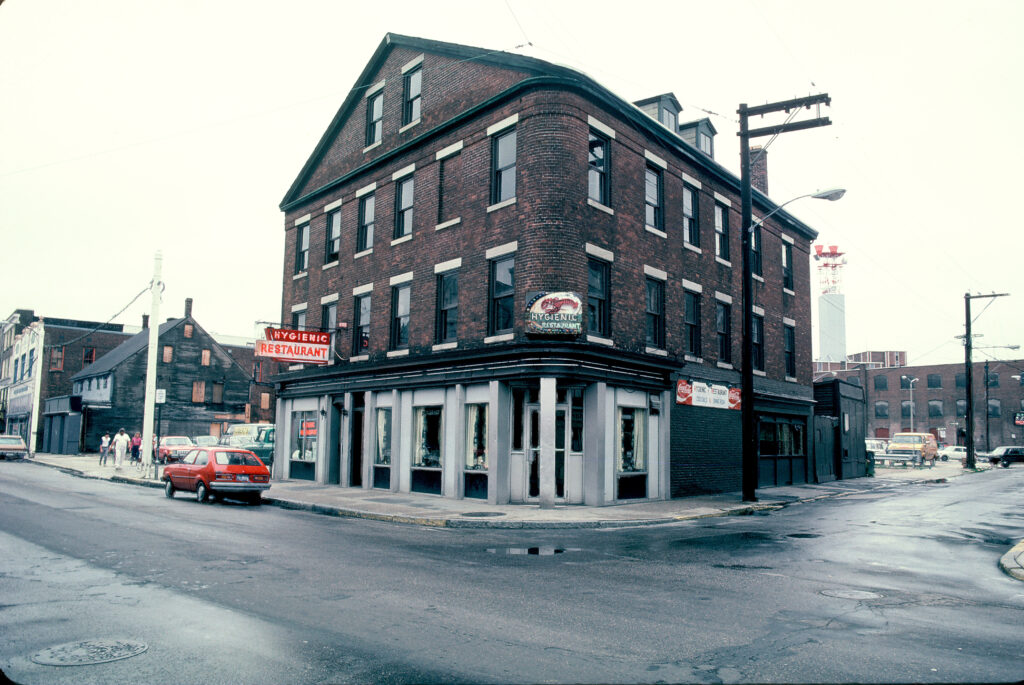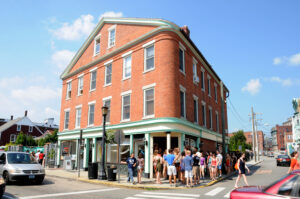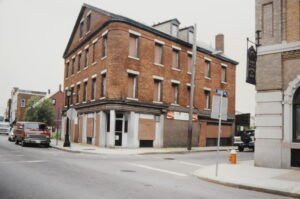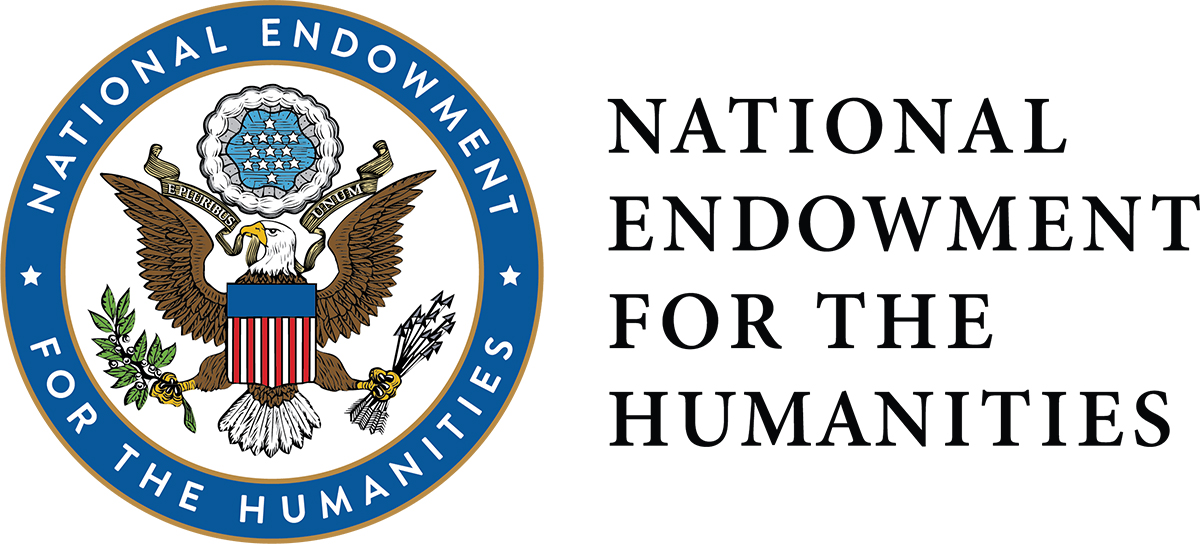By A. Vincent Scarano
The Hygienic building was built in 1844 as a whaling grocery and provisioning store as well as family quarters for Captain Giles Harris. Located at the corner of Bank and Golden Streets, the Hygienic structure is an integral part of New London’s architectural history.
Creation of the Hygienic Building
At the time of the building’s construction, Captain Giles Harris was a member of a prominent whaling family in New London. More than six decades before, British troops, led by Benedict Arnold, burned much of New London in 1781 during the American Revolution. Over the 19th century, the city rebuilt largely with revenue from the whaling industry and became the second largest whaling port in the world.
Bank Street’s close proximity to the Thames River and New London Harbor made it integral to the city’s whaling and commercial activities. After demolishing an earlier building, Captain Giles Harris built the Hygienic building in 1844. When reclaiming the basement for a gallery over a century later, the foundations of a previous building as well as a cannonball, clay pipes and bottles were found. Before Harris’ death in 1864 and subsequent sale of the property, the building was a whaling grocery and provisioning store.
Hygienic Restaurant
The building became the Columbia Hotel in the late 19th century with retail shops on the first floor. In 1919, the Swanson Brothers started a delicatessen in the building. In 1931, the Sigros family bought the business and renamed it the Hygienic Restaurant and Delicatessen. The Hygienic Restaurant became a popular 24-hour eatery with a catering kitchen and rooms on the upper floors.
From the 1930s through the 1980s, it was a popular place for late night dining and Sunday and holiday breakfasts. The Hygienic Restaurant attracted people off the street, fishermen, sailors on leave, and others. Bob Damron’s Address Book—a national travel guide for gay men—listed the lounge from at least 1965 to 1975.
It is unclear exactly how the restaurant got its name, but dining trends in the early 20th century emphasized cleanliness. The Sigros family may have thought that “hygienic” in the name would suggest a level of health and sanitation.
Urban Renewal in New London
In the 1960s and early 1970s, urban renewal and new construction took its toll on the residential and business community in downtown New London. The Winthrop Renewal Project threatened historic buildings, construction sites dotted the city, and larger retail businesses moved out. Escaping the wrecking ball, the Hygienic still witnessed the changes that urban renewal brought to the city of New London.
Artists Save the Hygienic
In 1979, a federal jobs training program, Comprehensive Education and Training Act (CETA), employed seven local fine artists to create public art. Beginning as a final project for the program, the Hygienic Art Show started an artist’s community downtown. It was also the beginning of yearly non-juried art exhibitions modeled after the Salon des Indépendants movement in Paris. This effort brought fine art to places average people would see in in everyday life. Those yearly exhibitions continued until the restaurant closed in 1986 and developers bought the building.
A group of volunteer artists incorporated the nonprofit, Hygienic Art, Inc. to produce the yearly Hygienic Art Shows. As the Hygienic Art Show continued in other venues, the Hygienic building lay vacant until 1996 when it was slated for demolition to make a parking lot for a neighboring bank. Nine days away from demolition, the nonprofit rallied a grassroots effort of community volunteers, artists, and residents to save the building. Hygienic Art representatives had a meeting at Connecticut Attorney General Richard Blumenthal’s office with the Connecticut Historical Commission, the National Trust for Historic Preservation, the bank, and the developers. Under the state’s Environmental Protection Act, Hygienic Art, Inc. was granted a temporary stay of demolition and six months to come up with construction and restoration plans and half of the funding for the project. After fundraising $400,000, Hygienic Art obtained a permanent stay of demolition and ultimately purchased the building in 1998 using state bonding funds.
Hygienic Art undertook this project to better serve its mission to support the development of emerging artists in the region, revitalize the downtown historic district, enhance tourism for the city, and participate in the economic development of the City of New London. Since the building’s opening in 2000, Hygienic Art provides affordable housing and studios to low and medium income artists, 125 events and gallery exhibitions per year, a summer camp program for inner-city youth, Art Park summer concerts, film, cultural festivals fundraisers, and other events.
The building, residences, galleries, Art Park, and vision of Hygienic Art now stands as a testament to community activism. The structure itself has witnessed almost two hundred years of New London’s downtown history.
A. Vincent Scarano is president, artist, and one of the founding artists of Hygienic Art, Inc.











